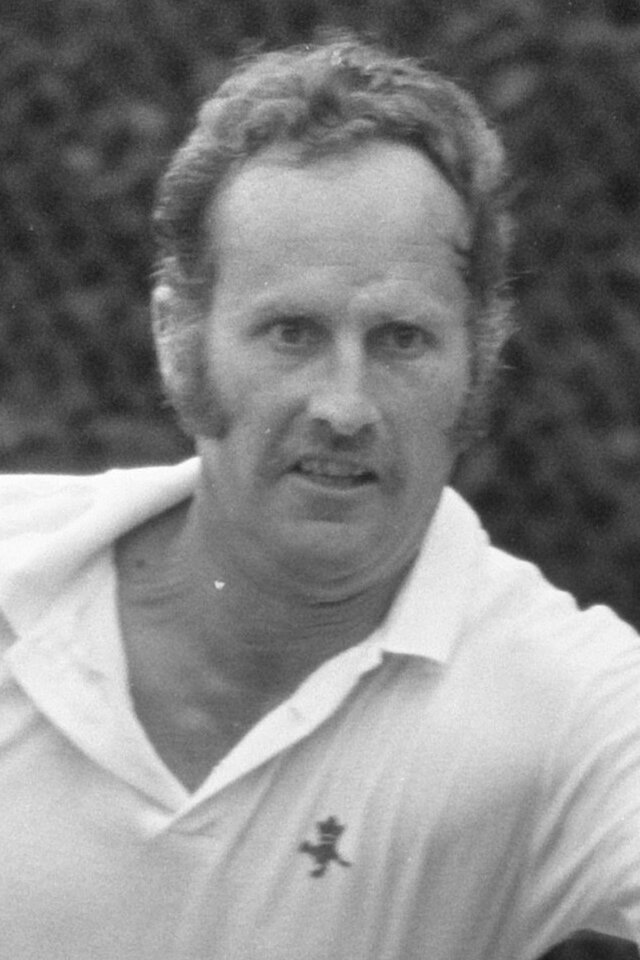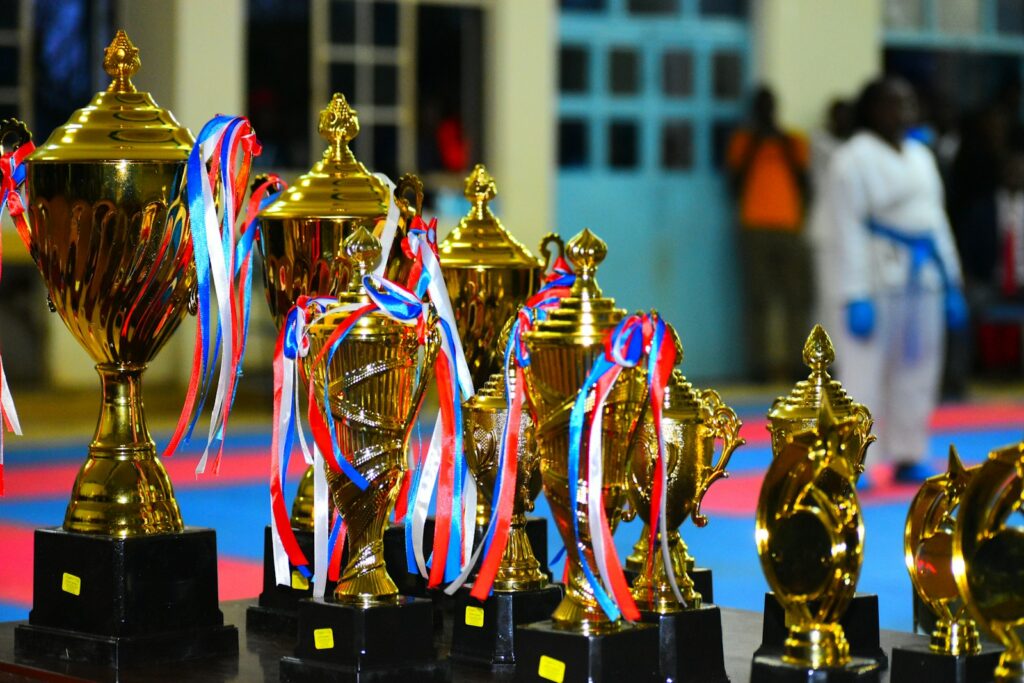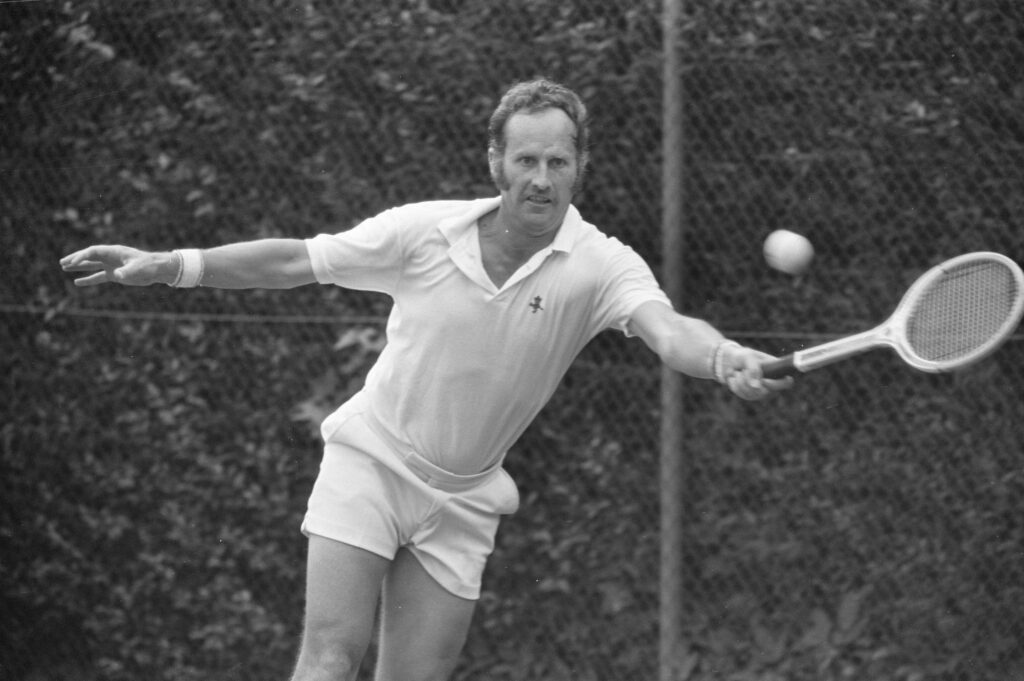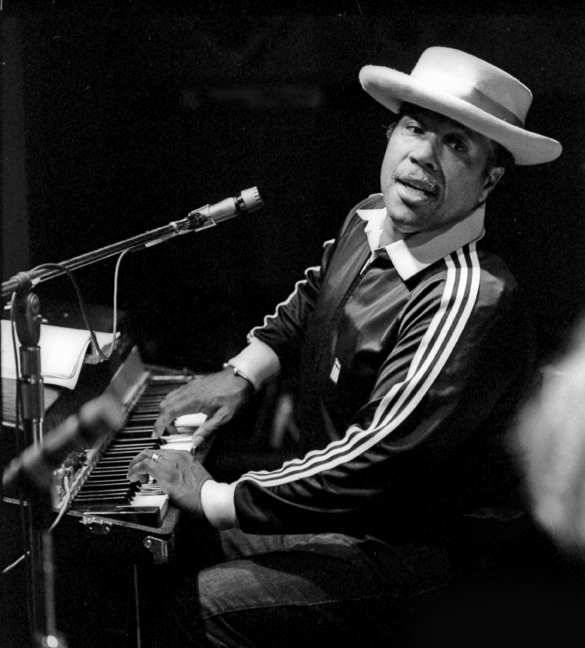
The world of tennis mourns the profound loss of one of its most revered figures, Neale Fraser, the esteemed Australian tennis ace and Davis Cup stalwart, who passed away on December 2, 2024, at the age of 91. Fraser, a name inextricably linked with a golden era of Australian tennis dominance, left an indelible mark on the sport. His contributions extended far beyond his formidable playing career, encompassing unparalleled dedication as a captain and mentor. His passing marks the end of an era, yet his legacy of sportsmanship, fierce competition, and unwavering national pride will continue to inspire.
Fraser’s remarkable life in tennis spanned decades, witnessing him rise to the world’s top ranking, clinch numerous Grand Slam titles, and lead his country to Davis Cup glory. He was widely regarded as a true gentleman of the game, celebrated for his powerful left-handed serve and strategic prowess on the court, complemented by his exceptional leadership off it. The news of his death on Tuesday prompted a widespread outpouring of tributes from across the globe, with legends like Rod Laver remembering him as “a true gem in a golden era of Australian tennis legends,” highlighting the deep impact he had on his peers and subsequent generations of players.
This in-depth article explores the multifaceted career of Neale Fraser, commencing with the foundations of his distinctive game and his meteoric rise as a player on the amateur circuit. We will meticulously examine his significant achievements in both singles and doubles at the Grand Slams, including his distinctive and unparalleled feat of securing the ‘Triple Crown’ at the U.S. National Championships on consecutive occasions. Furthermore, we will recount his dedicated service as a player for the Australian Davis Cup team, a period that profoundly shaped his understanding of team competition and set the stage for his even more extensive contributions as a captain. His story is one of consistent excellence, strategic brilliance, profound personal integrity, and an enduring love for the game and his country.

1. **Early Life and Foundational Game** Neale Fraser’s journey into elite tennis commenced on the clay courts situated directly adjacent to his childhood residence in Melbourne. It was within this accessible environment that he diligently cultivated the fundamental skills and unique tactical approaches that would ultimately propel him to international renown. These local courts provided a continuous and ideal training ground for a young, ambitious athlete eager to hone his craft.
His playing style rapidly evolved to incorporate a distinctive and exceptionally powerful left-handed serve, which quickly became an iconic hallmark of his game. This formidable weapon was not solely attributable to raw natural talent; rather, it was the culmination of astute observation and creative adaptation. Fraser, a keen follower of cricket, meticulously observed how leg-spin bowlers achieved diverse trajectories and spins by expertly cocking their wrists.
With remarkable ingenuity, he adapted this “googly” approach, a technical term borrowed directly from cricket, and seamlessly integrated it into the execution of his own serve. This unique modification enabled him to impart an unusual and unpredictable combination of spin and pace, rendering his serve exceptionally challenging for opponents to anticipate, read, and effectively return. Such an innovative technique demonstrated his precocious understanding of both the mechanics of the game and the strategic advantage that could be gained through unconventional methods, setting him distinctly apart from many of his contemporaries.
Read more about: Exploring the Minds that Shaped Our World: A Journey Through the Legacies of Iconic Scientists

2. **Ascension to World No. 1** The year 1959 marked a definitive and pivotal moment in Neale Fraser’s illustrious playing career, as he officially ascended to the esteemed rank of the world’s best men’s player. This prestigious recognition, conferred upon him by leading authoritative tennis journalists such as Lance Tingay and Ned Potter, solidified his status at the very pinnacle of amateur tennis globally. It represented the deeply satisfying culmination of years of relentless effort and consistently stellar performance across numerous international tournaments.
His meteoric ascent to the top position was not merely a personal triumph but also served as a significant highlight for Australian tennis, further cementing its reputation during what was widely acknowledged as a “golden era” of profound dominance. Fraser’s exceptional command during this period was characterized by his formidable all-court game, a potent combination of his thunderous serve, precise volleys, and strategically placed groundstrokes. He consistently demonstrated an extraordinary ability to perform under the immense pressure of major competitions, regularly reaching and ultimately winning crucial finals.
This No. 1 ranking was a clear and indisputable acknowledgment of his comprehensive mastery of the game, reflecting both his exceptional singles record and his burgeoning, equally successful contributions in doubles. To be recognized as the world’s premier player amidst a highly competitive field populated by legendary athletes speaks volumes about Fraser’s inherent talent, formidable resilience, and unwavering competitive spirit. His consistent placement in the top 10 every year between 1956 and 1962 further illustrates the sustained excellence that underpinned his status as a world-beater.
Read more about: Beyond the Stunts: Why Steve McQueen’s 14 Iconic Roles Still Define Action Cool for Generations

3. **Grand Slam Singles Triumphs** Neale Fraser’s remarkable singles career was emphatically punctuated by significant victories at two of tennis’s most revered tournaments: the US Open and Wimbledon. In 1959, he secured his inaugural US Championships title, a momentous triumph which he then successfully and convincingly defended in 1960. These back-to-back victories achieved at the historic Forest Hills venue vividly showcased his exceptional consistency and his innate ability to perform at the highest level on the fast grass courts characteristic of the era.
The year 1960 proved to be an especially memorable and career-defining period for Fraser, as he gloriously clinched the highly coveted Wimbledon singles championship. This monumental victory at the spiritual home of tennis, achieved after a hard-fought final against his fellow Australian compatriot Rod Laver, unequivocally cemented his burgeoning international reputation as one of the game’s truly elite players. His signature powerful serve and aggressive net play were particularly well-suited and devastatingly effective on Wimbledon’s meticulously manicured, lightning-fast grass surfaces.
Despite reaching the pinnacle of singles tennis at both the US Open and Wimbledon, the Australian Championships notably remained an elusive major prize in his singles career. He valiantly finished as a runner-up on three separate occasions – specifically in 1957, 1959, and 1960. The 1960 final against Rod Laver was particularly poignant, as he famously held a championship point before ultimately succumbing to defeat. These agonizing near-misses, while undoubtedly frustrating, only further underscore the profound depth of his talent and his consistent presence in the crucial latter stages of major tournaments throughout his entire playing career.
Read more about: Art Seitz: The Legendary Lensman Who Captured Tennis’s Soul, On and Off the Court, Dies at 82
4. **Doubles Dominance** While Neale Fraser was an exceptionally formidable singles competitor, his extraordinary prowess in the doubles arena was arguably even more remarkable and comprehensive, ultimately earning him an astonishing additional 16 Grand Slam titles encompassing both men’s doubles and mixed doubles. This segment of his career distinctly highlights his exceptional versatility on court, his profound tactical intelligence, and his unparalleled ability to forge highly successful partnerships with a diverse array of teammates. He consistently demonstrated a remarkable aptitude for team play, a fundamental facet of tennis that he evidently cherished and excelled in deeply.
In the realm of men’s doubles, Fraser secured an impressive total of 11 Grand Slam crowns, a compelling testament to his unwavering consistent excellence and his astute strategic acumen, particularly at the net. He triumphed at the Australian Championships on three separate occasions (1957, 1958, and 1962), claimed the French Championships title three times (1958, 1960, and 1962), and dominated the US Championships with three victories (1957, 1959, and 1960). His two highly coveted Wimbledon doubles titles were secured in 1959 and 1961, showcasing his mastery across all Grand Slam surfaces.
What makes this extraordinary record even more profoundly impressive is the fact that these numerous doubles victories were achieved with three distinct and highly respected partners: Ashley Cooper, Lew Hoad, and Roy Emerson. This notable ability to seamlessly adapt his game, forge strong on-court chemistry, and execute winning strategies with various teammates powerfully underscores his deep and nuanced understanding of doubles dynamics and his truly collaborative spirit. His influential role as “a General on the court,” a description famously articulated by his doubles partner Roy Emerson, was unequivocally evident in his outstanding doubles performances, where his decisive leadership and astute strategic calls frequently proved to be the pivotal factor in securing victory.
Read more about: Decade Dominators: Remembering the 2010s’ Most Legendary Athletes Who Shined Brightest in Sports History

5. **The Elusive Triple Crown** Neale Fraser holds an almost unparalleled distinction in the annals of Grand Slam history, having singularly achieved the highly coveted “triple crown” at the U.S. National Championships not once, but in two consecutive years: 1959 and 1960. This truly extraordinary feat entails winning the singles title, the men’s doubles title, and the mixed doubles title all within the confines of the same prestigious tournament. This remarkable accomplishment has stood the test of time, remaining unequaled by any other man at a Grand Slam tournament since his era, let alone on successive occasions, highlighting its unique place in tennis lore.
In 1959, Fraser showcased his profoundly comprehensive talent and unwavering endurance by triumphantly clinching the singles title against Alex Olmedo. Concurrently, he secured the men’s doubles title alongside his partner Roy Emerson, and also claimed the mixed doubles title with Janet Hopps. This unprecedented performance undeniably underscored his exceptional versatility and remarkable stamina across multiple demanding formats of the game, demanding sustained high-level play over an extended period.
The subsequent year, 1960, witnessed Fraser repeat this staggering and virtually unrepeatable achievement, as he successfully and emphatically defended all three of his U.S. National Championships titles. He once again secured the singles title, this time overcoming his compatriot Rod Laver. In men’s doubles, he partnered again with Roy Emerson, and clinched the mixed doubles title with Margaret Osborne duPont. This back-to-back demonstration of all-around supremacy is a powerful testament to his peak physical conditioning, formidable mental fortitude, and unparalleled tactical brilliance during an era predominantly shaped by exceptional Australian tennis talent.
Read more about: Fast Food Frenzy: 9 Wild Customer Requests That Leave Workers Shaking Their Heads (and Why You Should Skip Them!)

6. **Dedicated Davis Cup Player** Beyond his celebrated individual Grand Slam achievements, Neale Fraser harbored a profound and unwavering commitment to representing his native country, a dedication that was particularly evident throughout his distinguished service as a player for the Australian Davis Cup team. His impactful tenure as a key player for the national squad spanned from 1955 to 1963, a pivotal period during which he consistently brought his signature thunderous serve, astute strategic play, and relentless competitive spirit to the highly charged international team competition. He frequently articulated his deep-seated patriotism and boundless national pride, famously stating with conviction, “I could never think of anything better than representing your country.”
Throughout his active playing career in the Davis Cup, Fraser meticulously compiled an impressive and formidable record of 18 wins against only 3 losses, a statistic that powerfully demonstrates his undeniable reliability and sharp competitive edge within demanding team environments. His singles record, in particular, stood at an exceptional 11 wins and just 1 loss, underscoring his dominance in crucial one-on-one encounters. Simultaneously, his doubles record was equally strong, boasting 7 wins and 2 losses, highlighting his effectiveness in team pairings. These compelling statistics unequivocally underscore his absolutely crucial role in Australia’s formidable Davis Cup campaigns during what was often described and widely recognized as a “golden era” for Australian tennis on the world stage.
Despite the magnitude of his individual successes and Grand Slam glories, the team aspect inherent to the Davis Cup competition consistently held a uniquely special and cherished place in Fraser’s heart, proving to be “nearest to Fraser’s heart” alongside his beloved doubles play. His extensive early experiences as a player in this prestigious tournament profoundly instilled in him a deep, intuitive understanding of the complex team dynamic, the immense pressures associated with international representation, and the overwhelming pride inextricably linked with achieving national victory. These invaluable lessons and profound insights would subsequently serve as an indispensable foundation for his future, even more extensive, and record-breaking leadership role as the Australian Davis Cup captain.
Read more about: Martial Solal, French Jazz Piano Virtuoso and Composer, Dies at 97, Leaving an Enduring Legacy of Innovation

7. **A Record-Setting Davis Cup Captaincy** Neale Fraser’s transition from an acclaimed player to the non-playing captain of Australia’s Davis Cup team marked the beginning of an equally illustrious chapter in his storied career. This role was not merely an assignment but the fulfillment of a deeply held ambition, reflecting his profound understanding and love for team competition. His dedication to representing his country was so strong that he famously chose to remain an amateur, foregoing lucrative professional offers, specifically “in the hope he would succeed Hopman as Australian Davis Cup Captain.” This ambition was realized in 1970, initiating a remarkable tenure that would redefine leadership in team tennis.
For an unprecedented 24 years, from 1970 to 1993, Fraser steered the Australian Davis Cup team with unparalleled strategic vision and steadfast guidance. Under his command, Australia claimed the prestigious Davis Cup trophy on four separate occasions, cementing its status as a formidable force on the international stage. These triumphs occurred in 1973, 1977, 1983, and 1986, each victory a testament to his astute tactical decisions and his exceptional ability to foster a winning team environment amongst the nation’s top players.
Fraser’s captaincy record stands as a monumental achievement in the history of the sport. He successfully piloted Australia through 75 ties, securing an impressive 55 victories during his more than two-decade-long leadership. This enduring success underscores his unwavering commitment and the profound trust placed in him by the nation’s tennis establishment. His deep-seated belief in the power of national representation, which he frequently articulated, formed the bedrock of his captaincy, inspiring countless players under his charge to reach for greatness.
The consistency of his leadership over such an extended period is virtually unmatched, speaking volumes about his profound influence. His strategic insights, honed from years as a top-tier player, seamlessly translated into his captaincy, allowing him to navigate the complexities of international team tennis with exceptional skill. He truly embodied the spirit of the Davis Cup, viewing team play as “nearest to Fraser’s heart” alongside his beloved doubles, a sentiment that resonated throughout his remarkable leadership era.

8. **A Mentor and Inspiration to Generations** Beyond the tactical brilliance and record-setting statistics, Neale Fraser’s most enduring contribution might be found in his profound role as a mentor and inspirational figure to generations of Australian tennis players. His leadership transcended mere coaching; it was a deeply personal guidance that shaped the careers and characters of many who followed in his footsteps. Under his extensive captaincy, he inspired talents such as John Newcombe, John Fitzgerald, and Pat Cash, instilling in them not only a drive for excellence but also a deep appreciation for the traditions and values of the sport.
Pat Cash, one of the notable players to benefit directly from Fraser’s guidance, eloquently captured the essence of this relationship, reflecting, “He was like a father to me.” This heartfelt sentiment speaks volumes about the depth of the bond Fraser forged with his players. It highlights a relationship built on trust, respect, and a genuine concern for their well-being, both on and off the court. Such paternal guidance is rare in elite sports, making Fraser’s impact particularly significant and memorable.
Cash further elaborated on Fraser’s unique ability to empower his charges, stating, “He just knew how to make you feel important and play your best.” This encapsulates a fundamental aspect of effective mentorship: the capacity to unlock a player’s full potential by fostering self-belief and confidence. Fraser understood that peak performance often stems from psychological readiness as much as technical skill, and he consistently found ways to elevate his players’ mental game, ensuring they felt valued and capable of achieving their highest goals.
His leadership style was not about imposing his will, but about nurturing individual strengths and cultivating a collective spirit. The deep, intuitive understanding of team dynamics that he developed during his own playing days in the Davis Cup became an indispensable tool in his captaincy, allowing him to connect with players on a level that transcended mere instruction. He fostered an environment where players felt supported, understood, and motivated to perform not just for themselves, but for their team and their country, embodying his own unwavering patriotism and the famous declaration, “I could never think of anything better than representing your country.”
Read more about: Unveiling the Masters: A Definitive Look at 14 of the Greatest Screenwriters in Cinema History

9. **International Tennis Hall of Fame Induction** The profound impact of Neale Fraser’s career on the global tennis landscape was officially recognized with his induction into the prestigious International Tennis Hall of Fame in 1984. This esteemed honor placed him among the sport’s all-time greats, celebrating a legacy built on exceptional skill, sportsmanship, and an enduring commitment to the game. It marked a global acknowledgment of his multifaceted contributions, spanning his dominant playing days and his influential leadership both on and off the court.
Being enshrined in the International Tennis Hall of Fame signifies more than just a collection of titles; it recognizes an individual’s indelible influence on the sport’s history, development, and spirit. Fraser’s induction paid tribute to his accomplishments as a world No. 1, a three-time Grand Slam singles champion, and a remarkably successful doubles player with 16 major titles. His consistent presence in the top 10 between 1956 and 1962, coupled with his unique “Triple Crown” achievements, underscored a career of sustained excellence that demanded such high-level recognition.
The honor further highlighted his exemplary conduct and the respect he commanded throughout his career. Fraser was celebrated not only for his fierce competitive spirit but also for his reputation as a true gentleman of the game. His induction served as a powerful testament to the fact that his legacy was measured not just in trophies, but in the integrity and passion he brought to every aspect of his involvement with tennis, inspiring admiration across continents and generations.
Read more about: Angela Mortimer: A Champion’s Enduring Legacy, Overcoming Adversity to Dominate the Tennis World at 93

10. **Australian National Honors and Halls of Fame** Neale Fraser’s immense contributions to Australian sport and society were recognized with numerous national honors, reflecting the deep respect and gratitude of his homeland. His enduring legacy within his native country was celebrated through prestigious inductions into national halls of fame, affirming his status as an iconic figure in Australia’s sporting history. These accolades underscore the breadth of his influence, extending far beyond the confines of the tennis court and into broader public life.
In 1994, Fraser was inducted into the Australian Tennis Hall of Fame, a fitting tribute within the specific realm where he achieved so much. This honor, bestowed ten years after his international recognition, celebrated his unique place within Australian tennis history, highlighting his pivotal role during a period of unparalleled national success. It specifically commemorated his Grand Slam titles, his Davis Cup playing record, and his groundbreaking captaincy that brought immense pride to the nation.
Further cementing his broader impact, Fraser was also inducted into the Sport Australia Hall of Fame in 1986. His dedication to fostering sporting excellence extended beyond his own playing days, as evidenced by his significant leadership within this organization. He served with distinction as the chairman of the Sport Australia Hall of Fame from 1997 until 2005, demonstrating a continued commitment to promoting sports across the nation and recognizing the achievements of other Australian athletes.
His exceptional service and contributions were also formally acknowledged through national civil honors. Fraser was appointed a Member of the Order of the British Empire (MBE) in 1974, and later elevated to an Officer of the Order of Australia (AO) in 1988. These esteemed honors are awarded for significant achievements and contributions to Australian public life, reflecting the high regard in which he was held not only as an athlete and leader but also as a distinguished citizen whose influence resonated throughout the country.
Read more about: Sigourney Weaver, 74 and Glowing: A Red Carpet Reignition and Her Enduring Legacy at the Venice Film Festival!

11. **Prestigious ITF Recognitions for Lifelong Service** Neale Fraser’s lifelong dedication to tennis, particularly his unparalleled commitment to the Davis Cup, garnered him the highest forms of recognition from the International Tennis Federation (ITF), further solidifying his unique stature in the sport. These prestigious awards highlight an enduring legacy of service that extended far beyond his competitive playing days, underscoring his pivotal role in shaping the international landscape of tennis and its most cherished team competition.
In 2008, Fraser was bestowed with the International Tennis Federation’s highest honor, the Philippe Chatrier Award. This prestigious accolade recognizes individuals who have made outstanding achievements in tennis, both on and off the court. It is a testament to his comprehensive impact, acknowledging not only his remarkable Grand Slam career and world No. 1 ranking but also his transformative leadership as a Davis Cup captain and his unwavering advocacy for the sport. The award underscored his status as a global ambassador for tennis.
His profound connection to the Davis Cup was celebrated on multiple occasions. Fraser was named the Centenary Ambassador for the Davis Cup, a role that acknowledged his deep historical ties and unwavering commitment to the international team competition during its significant milestone. This ambassadorship served as a powerful symbol of his embodiment of the Cup’s spirit and traditions, further emphasizing his unique and central role in its storied history and continued global appeal.
Moreover, Fraser holds the distinct honor of being the first recipient of the ITF and International Hall of Fame’s Davis Cup Award of Excellence. This inaugural award was specifically created to recognize individuals whose dedication and contributions to the Davis Cup have been truly exceptional and pioneering. Being the first to receive such an honor speaks volumes about his unparalleled and foundational influence on the competition, recognizing his sustained efforts that contributed immensely to its prestige and global appeal for many decades.

12. **Heartfelt Tributes from the Global Tennis Community** The news of Neale Fraser’s passing on December 2, 2024, at the age of 91, prompted a profound and widespread outpouring of heartfelt tributes from across the global tennis community. Legends, former colleagues, and organizations alike shared their grief and admiration, underscoring the immense impact he had on countless lives within and beyond the sport. These messages collectively painted a picture of a revered figure whose influence transcended generations and national boundaries, confirming his status as a beloved icon.
Rod Laver, arguably Australia’s greatest ever player and a revered contemporary, expressed deep sorrow, writing in a post on X, “I am deeply saddened to hear of the passing of my dear mate and fellow lefty, Neale Fraser.” Laver fondly remembered Fraser as “a true gem in a golden era of Australian tennis legends — an incredible World No.1, a Grand Slam champion, and a Davis Cup icon.” He even acknowledged Fraser’s competitive drive, noting, “Neale bested me in 2 major finals, pushing me to become a better player,” a testament to the respect and camaraderie that defined their era.
Pat Cash, one of the players profoundly mentored by Fraser during his captaincy, reiterated his profound personal connection, stating simply, “He was like a father to me. He just knew how to make you feel important and play your best.” This poignant reflection highlighted the deeply personal and nurturing aspect of Fraser’s leadership, which left an indelible mark on those he guided. Cash’s words resonated deeply, articulating the sentiment of many who viewed Fraser as a pivotal figure in their development.
Other prominent figures also shared their condolences and admiration. Tennis great Paul McNamee lauded him as “Wimbledon & US Open singles champ & our wonderful Davis Cup captain,” adding, “If there’s one person who embodied Davis Cup, it was Frase.” Stephen Quartermain acknowledged “Another sad day for Australian sport,” while Craig Gabriel, in a more personal touch, shared, “I am so, so incredibly sad to hear the great Neale Fraser has passed away. Praise as we all called him because he loved strawberries (French for strawberries).” Tennis Australia also issued a statement, acknowledging him as “A true legend of Australian tennis, who will be missed by so many around the world. Vale Neale Fraser.” These tributes collectively mourn a legend whose character, achievements, and mentorship enriched the world of tennis immeasurably.
**An Enduring Legacy of Excellence and Devotion**
Read more about: John Travolta’s $10 Million Aviation Oasis: Unveiling the Celebrity Dream Home with a Private Airport He Built with His Late Wife
As the global tennis community reflects on the remarkable life of Neale Fraser, it becomes clear that his legacy is one of unparalleled excellence, unwavering devotion, and profound impact. From the Melbourne clay courts where he first developed his distinctive “googly” serve, to the pinnacle of world No. 1 and the glory of Grand Slam victories, Fraser consistently exemplified the highest standards of competitive sport. His unique achievement of the “Triple Crown” stands as a testament to his singular versatility and enduring skill, a feat that continues to inspire awe. Yet, it was his decades of selfless service, first as a dedicated Davis Cup player and then as its record-setting captain, that truly solidified his place in the pantheon of tennis greats. His leadership, marked by a paternal mentorship and an unyielding national pride, shaped generations of Australian players, leaving an indelible mark that extended far beyond the confines of the court. The numerous accolades, from international halls of fame to prestigious civil honors and heartfelt tributes, are a fitting reflection of a life extraordinarily well-lived—a life defined by integrity, passion, and an enduring love for the game and his country. Neale Fraser’s passing marks the close of a golden era, but his spirit and his monumental contributions will forever serve as an inspiration to all who cherish the sport of tennis.



